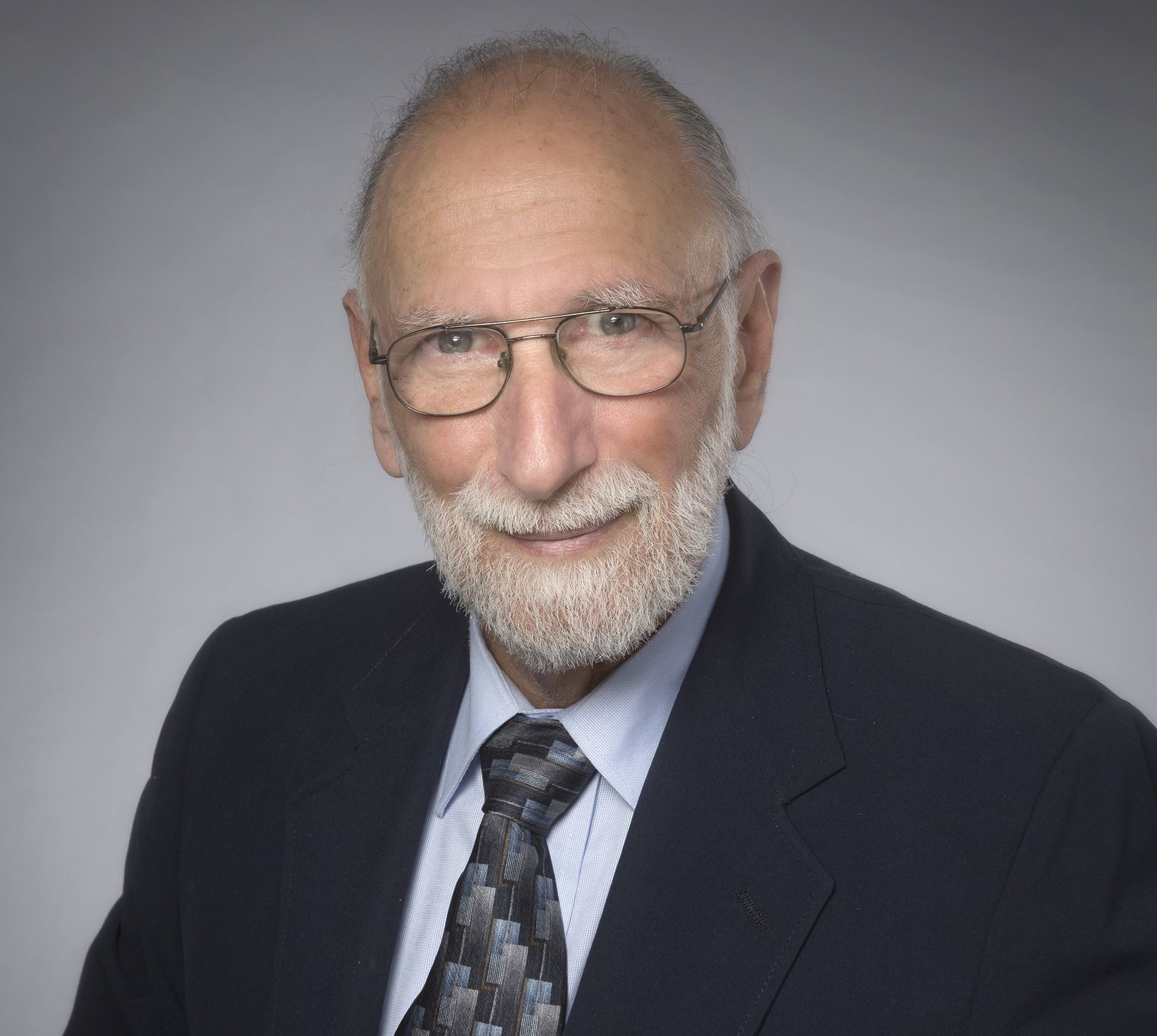Peter Meyer chats with Maria Coler about his fondest memories about his friend and colleague, Charlie Bartsch
By Steve Dwyer
Peter Meyer is recently making a point of showing Maria Coler his “Occupy Brownfields” T-shirt—and informing her about what he thinks the T-shirt means.
Recently, Coler conducted an extended conversation with Meyer about the evolution and future of the brownfield redevelopment industry, as well as his fond recollections on his long-time friendship with Charlie Bartsch, the dynamic and well-loved brownfields industry advocate who died in 2017.
 Meyer, Professor Emeritus at University of Louisville (UL) and president of The E.P. Systems Group Inc., has had a long and distinguished career. He served as director of the Department of Urban and Public Affairs at UL. With a PhD in economics, Meyer had been director for the Center for Environmental Policy and Management at the university from 1988 to 2008. Prior to that he worked 19 years at Pennsylvania State University (Penn St.) in the Department of Community Development, State College. As Asst/Assoc Professor of Economic Planning, Meyer founded the first undergraduate degree in Economic Development at Penn St., and also taught in programs in Law Enforcement and Corrections. Peter has been a regular panelist in BCONE and the NYC Brownfield Partnership’s collaborative series on the impacts of Covid on the real estate regions represented by both organizations. The next panel in the series is being held on November 18, 2021 at 4 p.m.; register here https://www.nycbrownfieldpartnership.org/event-4450339 to meet Peter.
Meyer, Professor Emeritus at University of Louisville (UL) and president of The E.P. Systems Group Inc., has had a long and distinguished career. He served as director of the Department of Urban and Public Affairs at UL. With a PhD in economics, Meyer had been director for the Center for Environmental Policy and Management at the university from 1988 to 2008. Prior to that he worked 19 years at Pennsylvania State University (Penn St.) in the Department of Community Development, State College. As Asst/Assoc Professor of Economic Planning, Meyer founded the first undergraduate degree in Economic Development at Penn St., and also taught in programs in Law Enforcement and Corrections. Peter has been a regular panelist in BCONE and the NYC Brownfield Partnership’s collaborative series on the impacts of Covid on the real estate regions represented by both organizations. The next panel in the series is being held on November 18, 2021 at 4 p.m.; register here https://www.nycbrownfieldpartnership.org/event-4450339 to meet Peter.
 Coler, president of HCI Hydrotechnology Consultants Inc., Jersey City, N.J., has accumulated more than 15 years of experience in the environmental consulting field, and is a New Jersey Licensed Site Remediation Professional (LSRP). In her role as Chair of BCONE’s Scholarship Committee, she spoke with Meyer in great detail about such topics as:
Coler, president of HCI Hydrotechnology Consultants Inc., Jersey City, N.J., has accumulated more than 15 years of experience in the environmental consulting field, and is a New Jersey Licensed Site Remediation Professional (LSRP). In her role as Chair of BCONE’s Scholarship Committee, she spoke with Meyer in great detail about such topics as:
- His educational and professional background and why he selected an interdisciplinary focus;
- How and when he met Bartsch, which traces to 1980 as both CERCLA and RCRA were ratified as law, but prior to brownfields becoming a working concept;
- Bartsch’s work at the Northeast-Midwest Institute and how it dovetailed with Meyer’s work on economic development—plus how Meyer was “dragged into” the brownfields movement by Bartsch;
- How Charlie influenced his evolution to focusing on economic, social, and environmental justice issues—as opposed to economic development;
- The pitfalls of progress as Meyer says “we don’t always know what’s hazardous…and this is one of the blind spots of RCRA”;
- Meyer and Bartsch’s focus on brownfield redevelopment areas as opposed to a piecemeal, site-by-site approach and how it was influenced by data and GIS mapping; and
- The Biden Infrastructure Plan and what Charlie might have thought about it—plus how Meyer speculated how Bartsch would’ve attempted to improve it.
Speaking of data, Coler says in regards to data technology that crunching all of this information…and finding out the missing pieces…actually can help us understand how we can remediate these brownfield sites, clean up the environment, impact environmental justice issues, create a social and economic benefit. Doing it in the dark, one by one in silos, is really not the smart way to go. Coler believes that letting the data tell the story is the way to go. Meyere agrees: “This is one of the big issues that has always confounded economics. We don’t necessarily measure the logical things or the right things. And if you’re not measuring them, then guess what? You are not going to get the big data to work with. And that would have been certainly one of Charlie’s concerns, because I think that was something he was well aware of."
Coler spoke in great length to Meyer about a raft of key topics within the brownfield realm. Here are some of the areas that she addressed:
 MC: I'd like to know more about Charlie’s appointment to that USEPA post?
MC: I'd like to know more about Charlie’s appointment to that USEPA post?
PM: Interesting assignment. President Obama was trying to create a task force that was designed to promote manufacturing, and help figure out what it would take to bring more of it back to the United States. We’re initiating more of it again in the U.S., and from the EPA point of view, the question was reusing brownfields at manufacturing sites. The administration created this multi-agency Task Force, and at one point the U.S. Commerce Dept. wasn't particularly interested in having any EPA representative…they thought it would just ‘get in the way.’ Next thing you know Charlie’s the co-chair of the task force. The thing that was so interesting about it was that he was able to convince all these people that perceived EPA as ‘a problem’ to see EPA as an asset in addressing how to reuse sites. He had a whole different angle on how to approach redeeming and remediating large-size brownfields.
MC: Wasn’t there an interesting anecdote about the concept known as "brightfields?"
PM: Yes, reusing brownfield sites for solar and so on. But if you’re stomping in the solar space, brownfields may not be a territory in which you work. We don’t think about it much in the East Coast region, but the definition of brownfields includes all these abandoned mines that have high power electrical lines. Guess what? You have the transmission lines to take the electrical power out and position a bunch of windows on the top of that mountain. And this was something that absolutely fascinated Charlie in terms of something else we could do to stimulate the economy.
MC: About the Biden Infrastructure Plan, and the fact that the bill writers seem to have failed to form a constituency around the intersection of environmental, economic and social issues—do you think Charlie Bartsch would’ve been all over this issue and tried to address it?
PM: I believe that Charlie had the personality and expertise to bring people to the table. It's something that the bill is sorely lacking.
MC: What about Opportunity Zones?
PM: I don’t think Charlie would’ve been a fan, as the OZs offer incentives to owners of capital, rather than supporting underserved communities from within. Having said that, Charlie would’ve found a novel way to make them work.
MC: Charlie almost seems to be on another level: he had some sort of trait that made him a very compelling personality.
PM: My wife Chris once said that the big thing about Charlie is that he exuded positive energy at a level that nobody else did. He was ridiculously hard working. He could dive incredibly deep into the details and what he thought was important. But at the same time he was just an incredibly outgoing social being. And you don’t normally think of a scholar as being that outgoing. And his enthusiasm for advocacy, which is really the positive energy. He combined all of that in a way that I don’t think anyone else I know does.
MC: What was Charlie’s educational background, what did he study?
PM: He earned a degree in planning from the University of Illinois-Chicago. I think he came originally to the Northeast Midwest Institute as an economic planner. And that was his basic function. This was a man who could discuss something as arcane as petroleum brownfields at the brownfields conference and ended up receiving a standing ovation—routinely get standing ovations when he was done speaking. How does somebody talk about a technical problem to get a standing ovation?
MC: On the origins of the term "brownfields" — I heard Charlie's coined the term.
PM: Charlie turned it into meaning sites with special kinds of problems that needed special attention. One of the things that my wife Chris and I did in the late 1990s, is we had a book with a British colleague comparing land policy in the United States vs. European Union. One of the things that becomes extremely obvious is how far ahead we were than the rest of the world in confronting the contamination. Even though arguably, for example, the steel mills and the coal mines are far more ubiquitous in much smaller countries. I really believe that we, in the U.S., were able to sort things out sooner, and this was due to Charlie’s brownfield label.
MC: Charlie was an incredibly outgoing social being who remembered everybody by name and what they did. And could integrate pieces by getting people to talk to each other. Can you elaborate on that skill of establishing a label where you can get all focused on accomplishing things?
PM: Contamination has a particular meaning that differs in an engineering sense from a s social sense. Pull out a word like brownfield: The engineer doesn’t know what that means, it’s an alien term where you wonder if you could get everybody to coalesce around that meaning. We have to break all that down to teach each other, instruct developers who work in the real world outside of academia—we need one word cracking through it to help us overcome barriers.
 Part 2 of Maria Coler’s chat with Peter Meyer will be published in the near future, and a revelation about the term “Occupy Brownfields.”
Part 2 of Maria Coler’s chat with Peter Meyer will be published in the near future, and a revelation about the term “Occupy Brownfields.”
Posted November 15, 2021

